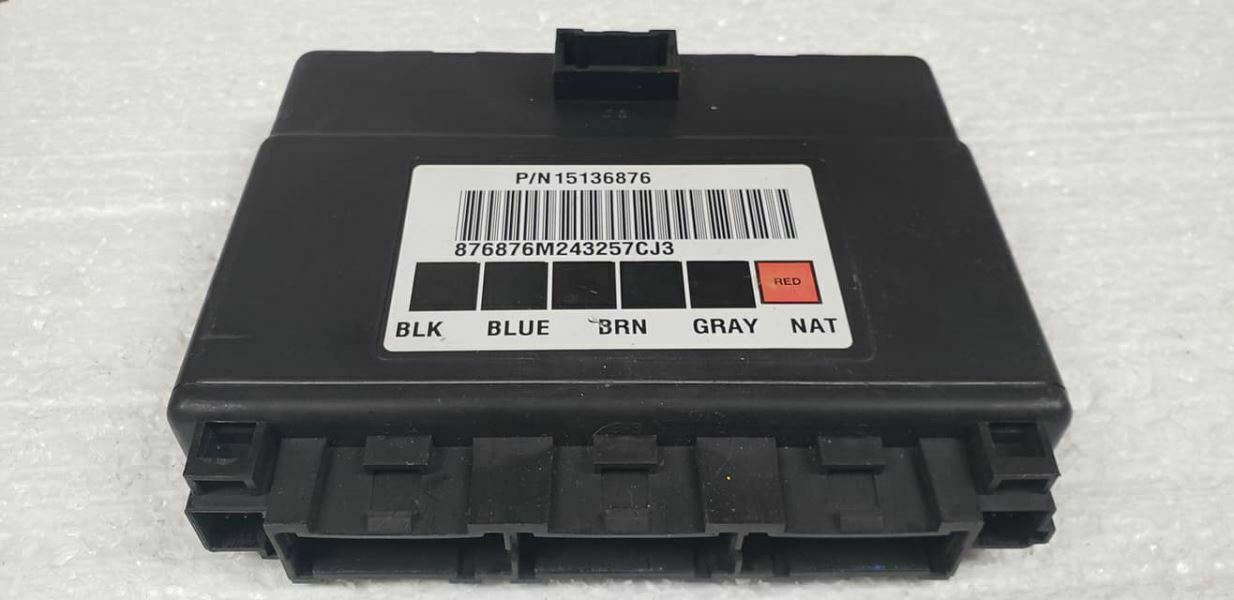Restore Your Truck’s Electrical Functions with a Reliable Solution
Are you chasing down frustrating electrical gremlins in your GM truck or van? Intermittent power windows, flickering lights, a malfunctioning security system, or strange instrument cluster behavior are all classic signs of a failing Body Control Module (BCM). As the central command center for your vehicle’s body electronics, a faulty BCM can cause a host of confusing and unpredictable problems. I’ve seen it hundreds of times in the shop: a perfectly good engine that won’t start or a truck where the horn honks randomly, all tracing back to this single component. This isn’t just an annoyance; it can be a major disruption to your daily work and life.
This replacement Body Control Module is the direct, effective fix for these issues. We take the guesswork and hassle out of the repair by pre-programming the module to your vehicle’s specific VIN before it ships. This means you get a part that’s ready for installation, loaded with the latest GM software updates, helping you avoid a costly and time-consuming trip to the dealership for programming. Get your truck or van back to full operational health with a dependable, correctly configured 2003-2007 GM BCM.
A Technician’s Notebook
A customer brought in his 2006 Silverado 2500 last month with a real head-scratcher. The dome lights wouldn’t turn off, the radio presets kept resetting, and occasionally the truck would refuse to crank, showing a ‘Security’ light on the dash. He’d already replaced the battery and checked all the fuses. After connecting my scan tool, I saw multiple communication loss codes with various modules. This is a tell-tale sign. We traced it back to the BCM, which had internal corrosion from a minor windshield leak. Installing a VIN-programmed BCM like this one solved all three problems at once. It’s a prime example of how one failing module can create a domino effect of electrical chaos.
Is Your Truck or Van Showing These Symptoms?
- ✔ Erratic or non-functional power windows, door locks, or mirrors.
- ✔ Interior or exterior lights that flicker, stay on, or don’t work at all.
- ✔ The security system preventing the vehicle from starting.
- ✔ Inoperative radio or instrument cluster gauges.
- ✔ False warnings appearing on the driver information center.
- ✔ Problems with the heating and A/C blower motor controls.
A Straightforward Guide to Installation
- Safety First: Disconnect the negative terminal from your vehicle’s battery to prevent any electrical shorts.
- Locate the BCM: On most Silverado, Sierra, and SSR models, the BCM is located under the driver’s side of the dashboard, near the steering column. On Express and Savana vans, it’s typically behind the center dash panel.
- Remove Trim Panels: Carefully remove any plastic trim or panels necessary to access the module. A simple trim removal tool can prevent scratches.
- Disconnect and Unbolt: Unplug the electrical connectors from the old BCM. They have locking tabs, so be gentle. Then, unbolt the module from its mounting bracket.
- Install the New BCM: Mount your new, pre-programmed BCM and securely plug in all the electrical connectors. You should hear a ‘click’ as they lock into place.
- Perform Final Procedures: Reconnect the battery. As noted below, you must now perform the ‘Setup SDM Primary Key’ and potentially a brake pedal position sensor relearn using a compatible scan tool to ensure full system functionality and clear any warning lights.
Important Post-Installation Steps
After installing your new 2003-2007 GM BCM, completing the following procedures with a professional-grade diagnostic tool is critical for safety and proper operation:
- Airbag System Reset: You must perform the ‘Setup SDM Primary Key in BCM’ procedure. This step is required to extinguish the airbag warning light and ensure the safety restraint system is communicating correctly with the new BCM.
- Brake Pedal Recalibration: Some vehicles require a brake pedal position sensor relearn. This ensures the brake lights and stability control systems function as intended with the new module.
Guaranteed Fitment for Your GM Vehicle
This module is a direct replacement for part numbers 15167329, 15194169, 15747545, 15136224, 15116065, 15198115, 15136876, and 10367689. It is compatible with a wide range of models, including:
- Chevrolet Silverado 1500/2500/3500 (2003-2007 Classic)
- GMC Sierra 1500/2500/3500 (2003-2007 Classic)
- Chevrolet Express 1500/2500/3500 Van (2003-2007)
- GMC Savana 1500/2500/3500 Van (2003-2007)
- Chevrolet SSR (2003-2006)
Please refer to the detailed fitment list in the product specifics to confirm compatibility with your exact year, model, and options. Ordering this 2003-2007 GM BCM ensures you get the right part, programmed and ready for your repair.
Frequently Asked Questions
Do I need to do any programming after I receive this BCM?
No. We program the module to your vehicle’s VIN before shipping. However, you will need to perform vehicle-specific relearn procedures after installation, such as the airbag system reset and brake pedal calibration, using a compatible scan tool.
How do I provide my VIN number?
After you complete your purchase, you will need to send us a message with your 17-digit Vehicle Identification Number (VIN). We cannot program and ship your part without it.
Will this fix my ‘Service 4WD’ message?
While a faulty BCM can cause a variety of issues, a ‘Service 4WD’ message is more commonly related to the Transfer Case Control Module (TCCM) or the encoder motor/sensor on the transfer case itself. It’s best to diagnose the specific trouble codes before ordering.
Is this a difficult part for a DIYer to replace?
The physical replacement is straightforward for someone with basic mechanical skills. It involves removing some dash panels and unplugging connectors. The most critical part is having access to a bi-directional scan tool to perform the necessary post-installation relearn procedures.
What happens if I don’t do the airbag (SDM) relearn procedure?
The airbag warning light will remain illuminated on your dashboard, and more importantly, the supplemental restraint system may not function correctly in the event of a collision. This is a critical safety step that must not be skipped.



